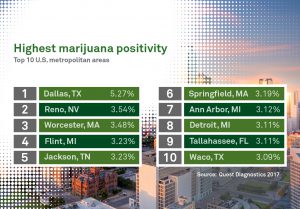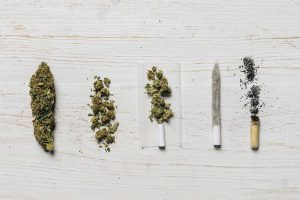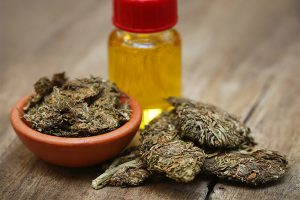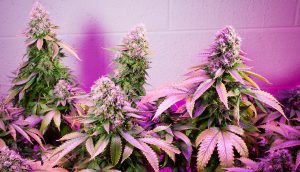Unlike drunken driving, limited research is available about the risks of driving under the influence of illicit drugs and the involvement of drugs in accidents. Today, a majority of information is compiled from roadside surveys, injury and fatality reports, and blood analysis following accidents.
Drugged, or drug-impaired driving, is defined by the National Highway Traffic Safety Administration (NHTSA) as driving under the influence of substances such as alcohol, cocaine, marijuana, opioids, as well as drugs prescribed by a physician.[1] Often people mix substances, which can change the effects of a drug, making them unpredictable. Drug use can slow reaction times, cause drowsiness or dizziness, impact judgment, and increase aggression —all dangerous factors when operating a motor vehicle. This translates to a driver weaving in and out of the lane, driving slower or faster speeds than permitted, and paying less attention to the road or traffic signals.
How many people drive under the influence of drugs?
According to the National Survey on Drug Use and Health, approximately 12.8 million Americans aged 16 or older self-reported that they drove under the influence of illicit drugs in 2017.[2]
The National Highway Traffic Safety Administration (NHTSA) publishes
research about the impact of drug-impaired driving and compares its data to
previous years.[3] The
most recent findings say:
- Approximately 20% of surveyed drivers tested
positive for potentially impairing drugs.
- The number of drivers who tested positive for marijuana
increased 48% from 2007 to 2014.
- Weekend evenings from 10 PM until midnight and from
1 to 3 AM show a higher prevalence of drug-impaired driving.
Changes to
state marijuana legislation coupled with a gap in education has led to
misconceptions about the effects of marijuana, including how driving under the
influence of marijuana may pose risk to our roadways.
- Data shows that driving after smoking cannabis interferes
with psychomotor function and driver’s ability to multitask.[4]
- A report from the Governors Highway Safety
Association says that 41.1% of the drug-positive fatally-injured drivers were
positive for some form of marijuana in 2016.5
The report concluded that “the best overall estimate of marijuana’s effect on
crash risk in general is an increase of 25-35%, or a factor of 1.25 to 1.35.”
- Since recreational marijuana was legalized,
marijuana-related traffic deaths increased 151% while all Colorado traffic
deaths increased 35%, according to the Rocky Mountain High Intensity Drug
Trafficking Area report.[5]
The Colorado Department of Transportation surveyed 11,000 marijuana users and
non-users. Of those surveyed, 69% admitted to having driven high at least once
during the past year.
Lastly, it is illegal in every state to drive impaired by drugs or alcohol. A driver cannot typically assess their own impairment; however, law enforcement officers are trained to recognize the signs of drugged driving.
Download our marijuana white paper.
For more information, download our Common Drugs of Abuse reference or visit our website.
Photo courtesy of National Highway Traffic Safety Administration
[1] National Highway Traffic Safety Administration (NHTSA). Drug-Impaired Driving. Accessed June 4, 2019 https://www.nhtsa.gov/risky-driving/drug-impaired-driving.
[2] Center for Behavioral Health Statistics and Quality.Results from the 2017 National Survey on Drug Use and Health: Detailed Tables. Rockville (MD): SAMHSA; 2018. Accessed June 4, 2019 https://www.samhsa.gov/data/sites/default/files/cbhsq-reports/NSDUHDetailedTabs2017/NSDUHDetailedTabs2017.pdf
[3] National Highway Traffic Safety Administration, 2013–2014 National Roadside Survey of Alcohol and Drug Use by Drivers. Accessed June 4, 2019 www.nhtsa.gov/behavioral-research/2013-14-national-roadside-study-alcohol-and-drug-use-drivers
[4] Desrosiers NA, Ramaekers JG, Chauchard E, et al. Smoked cannabis’ psychomotor and neurocognitive effects in occasional and frequent smokers. Journal of Analytical Toxicology 2015;39(4):251-261. Accessed June 4, 2019 https://doi.org/10.1093/jat/bkv012
[5] Rocky Mountain High Intensity Drug Trafficking Area. The legalization of marijuana in Colorado: the impact volume 5. Accessed March 11, 2019 https://rmhidta.org/files/D2DF/FINAL-%20Volume%205%20UPDATE%202018.pdf
 Your Privacy Choices
|
Privacy Notices
|
Terms
|
Language Assistance / Non-Discrimination Notice | Asistencia de Idiomas / Aviso de no Discriminación | 語言協助 / 不䈚視通知
Your Privacy Choices
|
Privacy Notices
|
Terms
|
Language Assistance / Non-Discrimination Notice | Asistencia de Idiomas / Aviso de no Discriminación | 語言協助 / 不䈚視通知



















Unlike drunken driving, limited research is available about the risks of driving under the influence of illicit drugs and the involvement of drugs in accidents. Today, a majority of information is compiled from roadside surveys, injury and fatality reports, and blood analysis following accidents.
Drugged, or drug-impaired driving, is defined by the National Highway Traffic Safety Administration (NHTSA) as driving under the influence of substances such as alcohol, cocaine, marijuana, opioids, as well as drugs prescribed by a physician.[1] Often people mix substances, which can change the effects of a drug, making them unpredictable. Drug use can slow reaction times, cause drowsiness or dizziness, impact judgment, and increase aggression —all dangerous factors when operating a motor vehicle. This translates to a driver weaving in and out of the lane, driving slower or faster speeds than permitted, and paying less attention to the road or traffic signals.
How many people drive under the influence of drugs?
According to the National Survey on Drug Use and Health, approximately 12.8 million Americans aged 16 or older self-reported that they drove under the influence of illicit drugs in 2017.[2]
The National Highway Traffic Safety Administration (NHTSA) publishes research about the impact of drug-impaired driving and compares its data to previous years.[3] The most recent findings say:
Changes to state marijuana legislation coupled with a gap in education has led to misconceptions about the effects of marijuana, including how driving under the influence of marijuana may pose risk to our roadways.
Lastly, it is illegal in every state to drive impaired by drugs or alcohol. A driver cannot typically assess their own impairment; however, law enforcement officers are trained to recognize the signs of drugged driving.
Download our marijuana white paper.
For more information, download our Common Drugs of Abuse reference or visit our website.
Photo courtesy of National Highway Traffic Safety Administration
[1] National Highway Traffic Safety Administration (NHTSA). Drug-Impaired Driving. Accessed June 4, 2019 https://www.nhtsa.gov/risky-driving/drug-impaired-driving.
[2] Center for Behavioral Health Statistics and Quality.Results from the 2017 National Survey on Drug Use and Health: Detailed Tables. Rockville (MD): SAMHSA; 2018. Accessed June 4, 2019 https://www.samhsa.gov/data/sites/default/files/cbhsq-reports/NSDUHDetailedTabs2017/NSDUHDetailedTabs2017.pdf
[3] National Highway Traffic Safety Administration, 2013–2014 National Roadside Survey of Alcohol and Drug Use by Drivers. Accessed June 4, 2019 www.nhtsa.gov/behavioral-research/2013-14-national-roadside-study-alcohol-and-drug-use-drivers
[4] Desrosiers NA, Ramaekers JG, Chauchard E, et al. Smoked cannabis’ psychomotor and neurocognitive effects in occasional and frequent smokers. Journal of Analytical Toxicology 2015;39(4):251-261. Accessed June 4, 2019 https://doi.org/10.1093/jat/bkv012
[5] Rocky Mountain High Intensity Drug Trafficking Area. The legalization of marijuana in Colorado: the impact volume 5. Accessed March 11, 2019 https://rmhidta.org/files/D2DF/FINAL-%20Volume%205%20UPDATE%202018.pdf